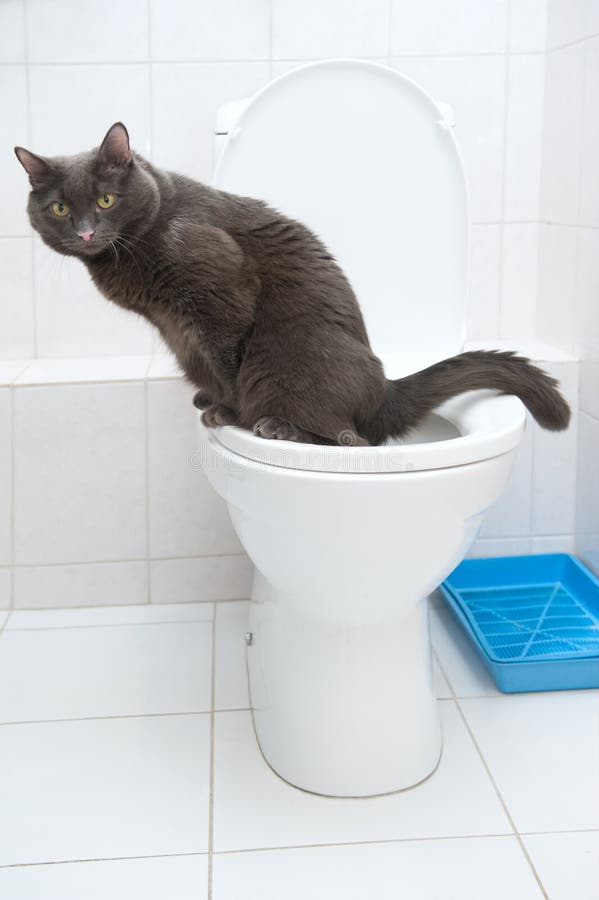Prevent Clogs and Damage: Don't Flush Cat Poop Down Your Toilet - Professional Recommendations
Prevent Clogs and Damage: Don't Flush Cat Poop Down Your Toilet - Professional Recommendations
Blog Article
We have noticed this post pertaining to Can You Flush Cat Poop Down The Toilet? directly below on the net and believe it made perfect sense to talk about it with you on this page.

Introduction
As feline owners, it's vital to be mindful of just how we dispose of our feline friends' waste. While it might appear convenient to purge pet cat poop down the toilet, this technique can have detrimental effects for both the environment and human wellness.
Alternatives to Flushing
Luckily, there are much safer and more accountable ways to take care of pet cat poop. Take into consideration the adhering to alternatives:
1. Scoop and Dispose in Trash
The most common approach of dealing with cat poop is to scoop it into a biodegradable bag and throw it in the garbage. Make certain to utilize a devoted clutter inside story and take care of the waste quickly.
2. Use Biodegradable Litter
Go with naturally degradable feline trash made from materials such as corn or wheat. These trashes are environmentally friendly and can be securely disposed of in the garbage.
3. Bury in the Yard
If you have a lawn, take into consideration hiding cat waste in a designated area away from veggie yards and water resources. Be sure to dig deep enough to stop contamination of groundwater.
4. Install a Pet Waste Disposal System
Buy a pet garbage disposal system especially designed for cat waste. These systems use enzymes to break down the waste, minimizing odor and environmental influence.
Health and wellness Risks
In addition to ecological issues, flushing cat waste can also pose health threats to humans. Cat feces might include Toxoplasma gondii, a bloodsucker that can trigger toxoplasmosis-- a possibly extreme ailment, specifically for expectant ladies and individuals with damaged body immune systems.
Environmental Impact
Purging pet cat poop introduces dangerous virus and bloodsuckers into the supply of water, posing a significant risk to aquatic environments. These pollutants can adversely impact aquatic life and compromise water top quality.
Conclusion
Accountable animal ownership extends beyond giving food and shelter-- it likewise involves proper waste administration. By avoiding flushing pet cat poop down the bathroom and going with alternative disposal approaches, we can lessen our environmental footprint and shield human health and wellness.
Why Can’t I Flush Cat Poop?
It Spreads a Parasite
Cats are frequently infected with a parasite called toxoplasma gondii. The parasite causes an infection called toxoplasmosis. It is usually harmless to cats. The parasite only uses cat poop as a host for its eggs. Otherwise, the cat’s immune system usually keeps the infection at low enough levels to maintain its own health. But it does not stop the develop of eggs. These eggs are tiny and surprisingly tough. They may survive for a year before they begin to grow. But that’s the problem.
Our wastewater system is not designed to deal with toxoplasmosis eggs. Instead, most eggs will flush from your toilet into sewers and wastewater management plants. After the sewage is treated for many other harmful things in it, it is typically released into local rivers, lakes, or oceans. Here, the toxoplasmosis eggs can find new hosts, including starfish, crabs, otters, and many other wildlife. For many, this is a significant risk to their health. Toxoplasmosis can also end up infecting water sources that are important for agriculture, which means our deer, pigs, and sheep can get infected too.
Is There Risk to Humans?
There can be a risk to human life from flushing cat poop down the toilet. If you do so, the parasites from your cat’s poop can end up in shellfish, game animals, or livestock. If this meat is then served raw or undercooked, the people who eat it can get sick.
In fact, according to the CDC, 40 million people in the United States are infected with toxoplasma gondii. They get it from exposure to infected seafood, or from some kind of cat poop contamination, like drinking from a stream that is contaminated or touching anything that has come into contact with cat poop. That includes just cleaning a cat litter box.
Most people who get infected with these parasites will not develop any symptoms. However, for pregnant women or for those with compromised immune systems, the parasite can cause severe health problems.
How to Handle Cat Poop
The best way to handle cat poop is actually to clean the box more often. The eggs that the parasite sheds will not become active until one to five days after the cat poops. That means that if you clean daily, you’re much less likely to come into direct contact with infectious eggs.
That said, always dispose of cat poop in the garbage and not down the toilet. Wash your hands before and after you clean the litter box, and bring the bag of poop right outside to your garbage bins.
https://trenchlesssolutionsusa.com/why-cant-i-flush-cat-poop/

I recently found that piece of writing on How to Dispose of Cat Poop and Litter Without Plastic Bags when doing a search on the search engines. Sharing is caring. You never know, you may just be helping someone out. Many thanks for your time. Visit us again soon.
Book With Us Today! Report this page